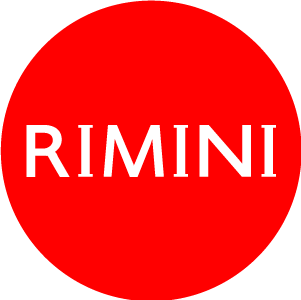It preserves thousand-year testimonies for the cultural identity of Rimini
A short walk through the streets of the city centre will take you to Piazza Ferrari, where the Church of Suffrage, built by the Jesuits (1719-1740) in honour of San Francesco Saverio can be found.
Next to it, there is the Jesuit monastery (1746-1755) designed by Alfonso Torreggiani, architect from Bologna. From 1797 to 1977 it was used as a hospital, first military and then civil, and it now houses the City Museum, with numerous exhibits of local historical-artistic heritage. The museum tour follows chronological criteria from the origin of the territory to the current day.
The Museum was inaugurated on 12 July 1990 following the restoration of the building. In 2015, on the occasion of the 25th anniversary of its opening, the Museum was named after Luigi Tonini, founder of the first municipal museum.
The garden-courtyard houses a Roman Lapidary, which contains an epigraphic collection of about one hundred Roman inscriptions with items dating from the 1st century B.C. to the 4th century A.D. providing insights into daily life, family ties, society and religion…In 2015, it was dedicated to the figure of the archaeologist Khaled al - Asaad, who was barbarously killed in Palmyra.
In 2010 a new Archaeological Section was opened. It is situated in the ancient cellar of the Museum. An exhibition on the extraordinary story of Rimini, from prehistory to Late Antiquity. The archaeological section continues on the ground floor, dedicated to the Imperial Rimini between the II and III century, with exhibition of splendid mosaics from the domus Diotallevi palace, as well as sculptures, ceramics, plaster decorations, coins, glass items, bronzes and last but not least the exceptional exhibition of the surgical instrument equipment from the "Domus del Chirurgo" in Piazza Ferrari. The archaeological section gives a view of Rimini from its origins to the Middle Ages, presenting a flourishing and peaceful city during the Roman Empire, a period which was tragically interrupted by the first barbarian invasions.
The archaeological site of the Surgeon’s Domus opened to the public in 2007. A little Pompeii in the city centre, which has become famous in the world owing to its unique archaeological finds, a site museum that provides the picture of exceptional historical and urban stratification bearing witness to 2000 years of local history.
In April 2024, in the year that marks the centenary of the opening of the Pinacoteca (picture gallery) in Rimini, the City Museum inaugurated its new exhibition halls from the early Middle Ages to the 15th century. This is a new narrative itinerary to rediscover treasures such as the sculptures from the lost churches of the early Christian and mediaeval ages, the precious frescoes and panels from the 14th century in Rimini, and masterpieces from the 15th century such as the Malatesta medals by Matteo de' Pasti, the extraordinary Pietà by Giovanni Bellini, and the large panel painting by Ghirlandaio. This new section joins the others that tell the story of Rimini upto the contemporary age: from the pictorial experience of 17th-century Romagna in the canvases of Cagnacci, Centino and Guercino, and to the 20th century by René Gruau, and the poetry of Filippo de Pisis
_______________________
Opening times:
From Tuesday to Sunday and holiday: 10.00 am - 1.00 pm and 4 pm - 7 pm
Closed on working Mondays
On July and August also on Wednesday and Friday evening: from 9 am to 11 pm
Pricing
The Museum is open to the public during Easter, Christmas and on special holidays like Ferragosto (August 15th), giving citizens and tourists the opportunity to admire valuable artistic collections and original archeological evidence.
The museum is accessible to people on wheelchairs using the side entrance (gate on the left corner of the building), which is free of architectural barriers. Ring the bell and you will be welcomed directly inside the Museum and the elevator provides access to each floor of exposure. Also the excavation area of the Surgeon's House provides an accessible entrance on the side opposite the church.
Special ticket of only 2 € for under 25. Free entry for all under 18.


